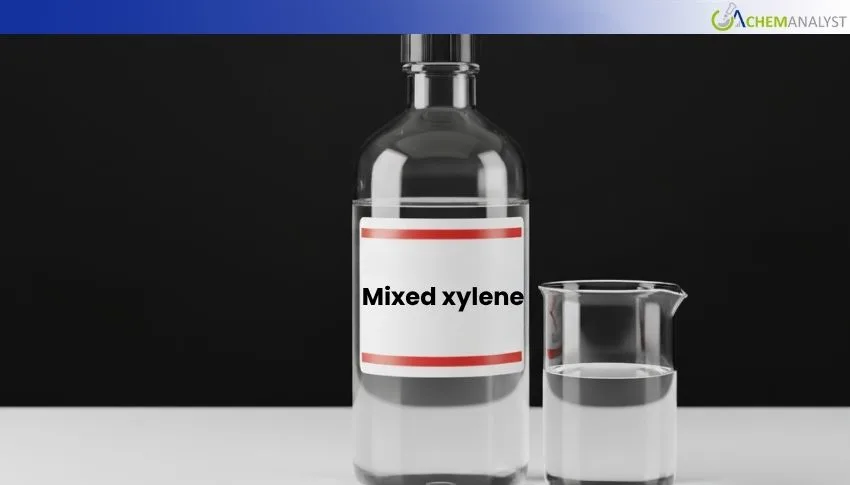Welcome To ChemAnalyst

The global mixed xylene markets saw some moderate movement during the first week of November, with stable supply and cautious buying from downstream players. In India, prices fell by 4.2% as reduced naphtha feedstock costs coincided with decent imports from South Korea, Singapore and Japan. Buying was hesitant on the domestic PET and phthalic anhydride fronts, but good inventories and shipping rates maintained the orderliness of the markets. In the USA, prices were mostly steady with steady refinery runs, relatively predictable feedstock prices and moderate PET and PA consumer markets aiding flux. Exports to Mexico and Canada continued to flow smoothly and assisted balanced markets. Germany saw a slight deterioration (-1.9%) but still managed to avoid major declines due to reduced downstream demand to keep phthalate exports restrained. Domestic inventories and production stability offered limited upside potential for disruptions now. Looking forward, mixed xylene markets are expected to remain in a range, with some moderate adjustments, but with adequate supply to maintain stability from managed refinery runs and available inventories, plus limited downstream demand impacts. In conclusion, without constraint, the markets should remain orderly with limited sharp movements.
Mixed xylene prices across India, the USA and Germany saw limited movement this week as steady supply met weakened downstream demand in early November. In India, CFR prices fell 4.2% amid weaker naphtha feedstock prices and stable imports from South Korea, Singapore and Japan. Demand from downstream PET and phthalic anhydride (PA) sectors remained flat but cautious, as previous markdowns lowered aggressive buying behaviour.
The supply conditions of mixed xylene in India played a support role for stability in the markets. Imported volumes were consistently delivered, and domestic blending and storage facilities held moderate inventory levels. Inventory levels of mixed xylene contributed to avoiding sudden restocking pressures and allowed suppliers to navigate the market transition without any significant risk. Freight prices were favourable, with stable container rates between intra-Asia supporting a stable landed supply. As a whole, the combination of steady imports, sufficient domestic inventories, and stable logistics allowed for an orderly flow in the Indian market.
In the United States, mixed xylene markets remained stable for the week due to steady domestic production and balanced supply and demand. Mixed xylene refineries were running at normal rates with no significant turnarounds, while naphtha costs remained steady and continued to provide a predictable cost of production for aromatics producers. The PET sector continued to experience moderate activity, which supported packaging and beverage production. Demand for mixed xylene from PA sector consumption also remained regular. Export shipments to Mexico and Canada continued to flow without problems, contributing to a balance in the market. The combination of steady domestic production and good supply management contributed to price stability in the US market.
Germany experienced a slight market correction of mixed xylene to begin the week, down 2%, due primarily to weaker downstream demand and cautious export activity. Domestic PET producers had slightly reduced operating rates ahead of moderate seasonal demand for packaging and beverage consumption, while PA consumption had maintained steady volumes. Export demand of mixed xylene was also limited as procurement was cautious, and inventories were comfortable. Stable refinery operations and feedstock costs provided little open market volatility and gave sellers the ability to make some adjustments without destabilizing the mixed xylene market.
Overall, the global mixed xylene markets exhibited moderate fluctuations, supported by ample supply, steady production, and cautious downstream consumption. India experienced the largest drop, while the US stayed flat, and Germany saw a slight correction. Sufficient inventories of mixed xylene, fixed feedstock costs, and disciplined buying kept the markets stable. In the near term, mixed xylene prices are expected to be range-bound, with little volatility. Steady imports, tightly run refineries, and cautious downstream demand will allow markets to continue adjusting slowly, with suppliers and consumers able to trade in a disciplined manner while responding to short term changes in global supply or demand.
We use cookies to deliver the best possible experience on our website. To learn more, visit our Privacy Policy. By continuing to use this site or by closing this box, you consent to our use of cookies. More info.
